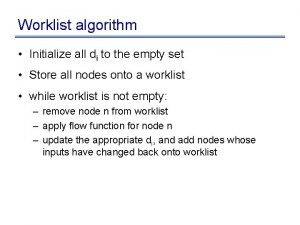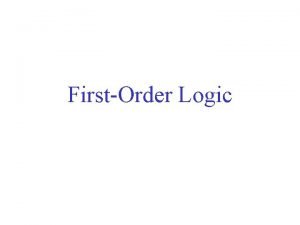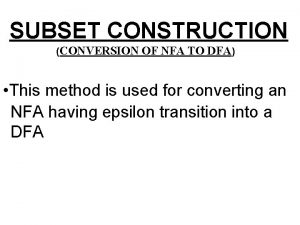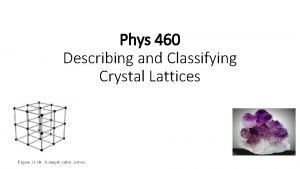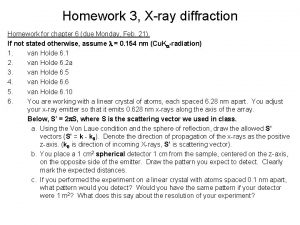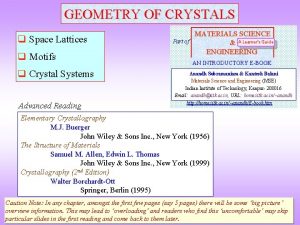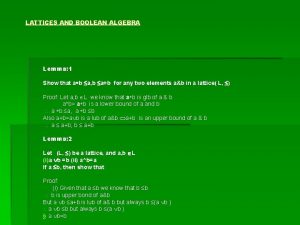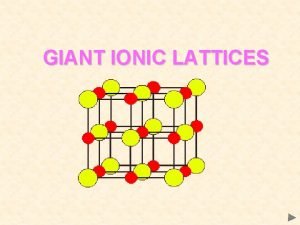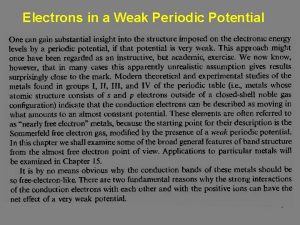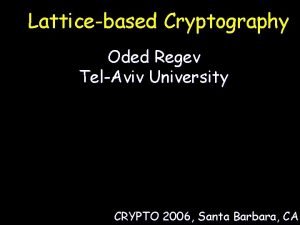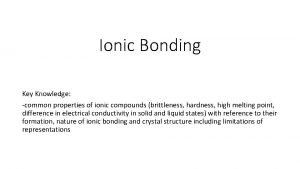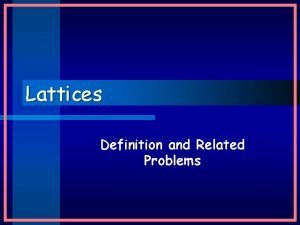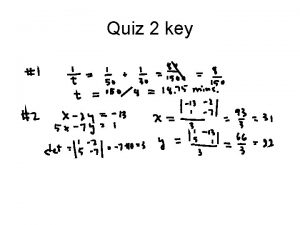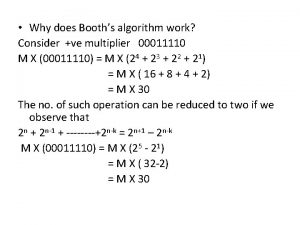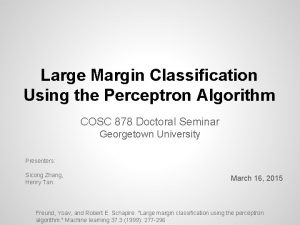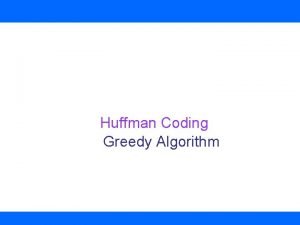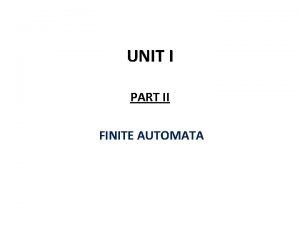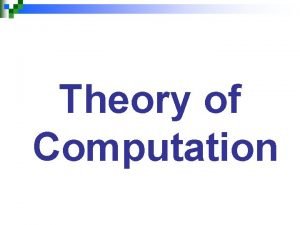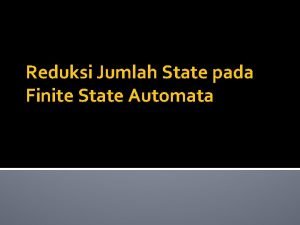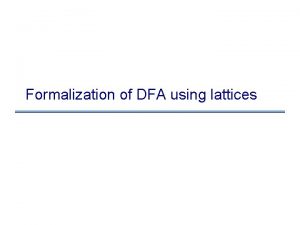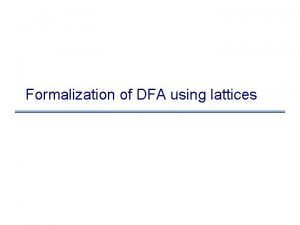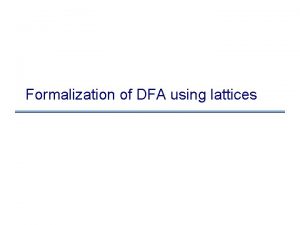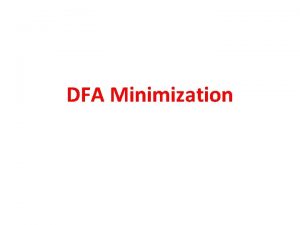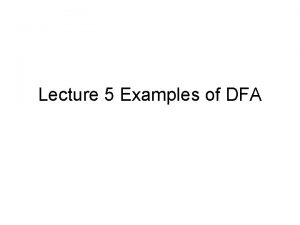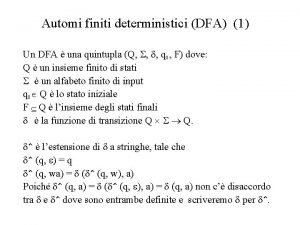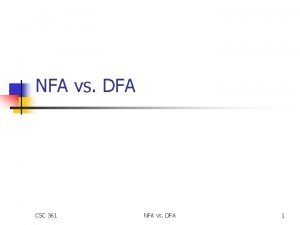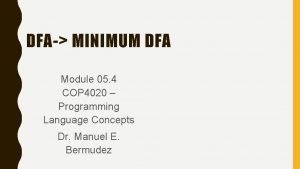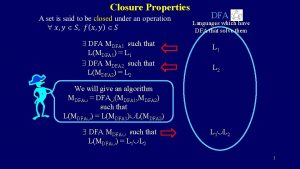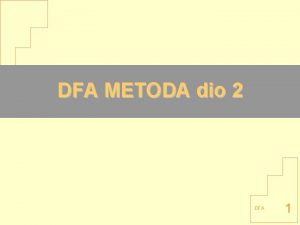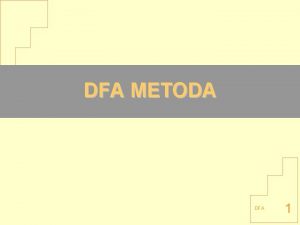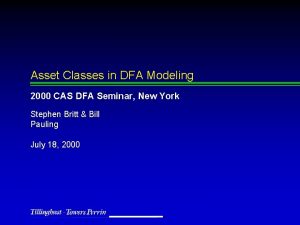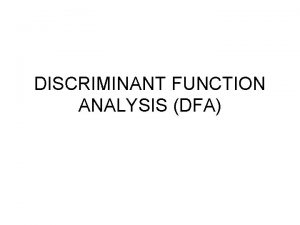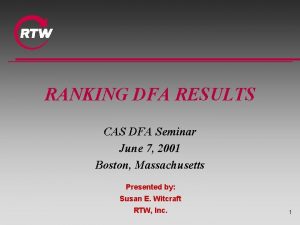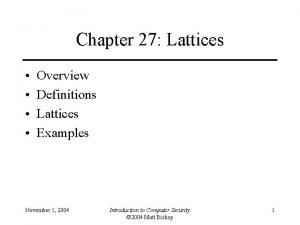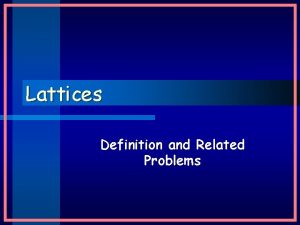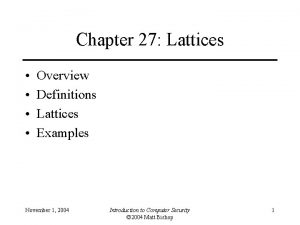Formalization of DFA using lattices Recall worklist algorithm































- Slides: 31

Formalization of DFA using lattices

Recall worklist algorithm let m: map from edge to computed value at edge let worklist: work list of nodes for each edge e in CFG do m(e) : = ; for each node n do worklist. add(n) while (worklist. empty. not) do let n : = worklist. remove_any; let info_in : = m(n. incoming_edges); let info_out : = F(n, info_in); for i : = 0. . info_out. length do let new_info : = m(n. outgoing_edges[i]) [ info_out[i]; if (m(n. outgoing_edges[i]) new_info]) m(n. outgoing_edges[i]) : = new_info; worklist. add(n. outgoing_edges[i]. dst);

Using lattices • We formalize our domain with a powerset lattice • What should be top and what should be bottom?

Using lattices • We formalize our domain with a powerset lattice • What should be top and what should be bottom? • Does it matter? – It matters because, as we’ve seen, there is a notion of approximation, and this notion shows up in the lattice

Using lattices • Unfortunately: – dataflow analysis community has picked one direction – abstract interpretation community has picked the other • We will work with the abstract interpretation direction • Bottom is the most precise (optimistic) answer, Top the most imprecise (conservative)

Direction of lattice • Always safe to go up in the lattice • Can always set the result to > • Hard to go down in the lattice • Bottom will be the empty set in reaching defs

Worklist algorithm using lattices let m: map from edge to computed value at edge let worklist: work list of nodes for each edge e in CFG do m(e) : = ? for each node n do worklist. add(n) while (worklist. empty. not) do let n : = worklist. remove_any; let info_in : = m(n. incoming_edges); let info_out : = F(n, info_in); for i : = 0. . info_out. length do let new_info : = m(n. outgoing_edges[i]) t info_out[i]; if (m(n. outgoing_edges[i]) new_info]) m(n. outgoing_edges[i]) : = new_info; worklist. add(n. outgoing_edges[i]. dst);

Termination of this algorithm? • For reaching definitions, it terminates. . . • Why? – lattice is finite • Can we loosen this requirement? – Yes, we only require the lattice to have a finite height • Height of a lattice: length of the longest ascending or descending chain • Height of lattice (2 S, µ) =

Termination of this algorithm? • For reaching definitions, it terminates. . . • Why? – lattice is finite • Can we loosen this requirement? – Yes, we only require the lattice to have a finite height • Height of a lattice: length of the longest ascending or descending chain • Height of lattice (2 S, µ) = | S |

Termination • Still, it’s annoying to have to perform a join in the worklist algorithm while (worklist. empty. not) do let n : = worklist. remove_any; let info_in : = m(n. incoming_edges); let info_out : = F(n, info_in); for i : = 0. . info_out. length do let new_info : = m(n. outgoing_edges[i]) t info_out[i]; if (m(n. outgoing_edges[i]) new_info]) m(n. outgoing_edges[i]) : = new_info; worklist. add(n. outgoing_edges[i]. dst); • It would be nice to get rid of it, if there is a property of the flow functions that would allow us to do so

Even more formal • To reason more formally about termination and precision, we re-express our worklist algorithm mathematically • We will use fixed points to formalize our algorithm

Fixed points • Recall, we are computing m, a map from edges to dataflow information • Define a global flow function F as follows: F takes a map m as a parameter and returns a new map m’, in which individual local flow functions have been applied

Fixed points • We want to find a fixed point of F, that is to say a map m such that m = F(m) • Approach to doing this? • Define ? , which is ? lifted to be a map: ? = e. ? • Compute F(? ), then F(F(? )), then F(F(F(? ))), . . . until the result doesn’t change anymore

Fixed points • Formally: • Outer join has same role here as in worklist algorithm: guarantee that results keep increasing • BUT: if the sequence Fi(? ) for i = 0, 1, 2. . . is increasing, we can get rid of the outer join! • How? Require that F be monotonic: – 8 a, b. a v b ) F(a) v F(b)

Fixed points

Fixed points

Back to termination • So if F is monotonic, we have what we want: finite height ) termination, without the outer join • Also, if the local flow functions are monotonic, then global flow function F is monotonic

Another benefit of monotonicity • Suppose Marsians came to earth, and miraculously give you a fixed point of F, call it fp. • Then:

Another benefit of monotonicity • Suppose Marsians came to earth, and miraculously give you a fixed point of F, call it fp. • Then:

Another benefit of monotonicity • We are computing the least fixed point. . .

Recap • Let’s do a recap of what we’ve seen so far • Started with worklist algorithm for reaching definitions

Worklist algorithm for reaching defns let m: map from edge to computed value at edge let worklist: work list of nodes for each edge e in CFG do m(e) : = ; for each node n do worklist. add(n) while (worklist. empty. not) do let n : = worklist. remove_any; let info_in : = m(n. incoming_edges); let info_out : = F(n, info_in); for i : = 0. . info_out. length do let new_info : = m(n. outgoing_edges[i]) [ info_out[i]; if (m(n. outgoing_edges[i]) new_info]) m(n. outgoing_edges[i]) : = new_info; worklist. add(n. outgoing_edges[i]. dst);

Generalized algorithm using lattices let m: map from edge to computed value at edge let worklist: work list of nodes for each edge e in CFG do m(e) : = ? for each node n do worklist. add(n) while (worklist. empty. not) do let n : = worklist. remove_any; let info_in : = m(n. incoming_edges); let info_out : = F(n, info_in); for i : = 0. . info_out. length do let new_info : = m(n. outgoing_edges[i]) t info_out[i]; if (m(n. outgoing_edges[i]) new_info]) m(n. outgoing_edges[i]) : = new_info; worklist. add(n. outgoing_edges[i]. dst);

Next step: removed outer join • Wanted to remove the outer join, while still providing termination guarantee • To do this, we re-expressed our algorithm more formally • We first defined a “global” flow function F, and then expressed our algorithm as a fixed point computation

Guarantees • If F is monotonic, don’t need outer join • If F is monotonic and height of lattice is finite: iterative algorithm terminates • If F is monotonic, the fixed point we find is the least fixed point.

What about if we start at top? • What if we start with >: F(>), F(F(>)), F(F(F(>)))

What about if we start at top? • What if we start with >: F(>), F(F(>)), F(F(F(>))) • We get the greatest fixed point • Why do we prefer the least fixed point? – More precise

Graphically y 10 10 x

Graphically y 10 10 x

Graphically y 10 10 x

Graphically, another way
 Worklist algorithm
Worklist algorithm Freedom worklist
Freedom worklist Characteristics of customer responsive culture
Characteristics of customer responsive culture Formalization of knowledge
Formalization of knowledge Subset construction
Subset construction Bravais lattices
Bravais lattices 7 crystal systems and 14 bravais lattices
7 crystal systems and 14 bravais lattices What is bravais lattice
What is bravais lattice Bragg's equation class 12
Bragg's equation class 12 7 crystal systems and 14 bravais lattices
7 crystal systems and 14 bravais lattices Bravais lattices
Bravais lattices Isotonicity property of lattice
Isotonicity property of lattice Giant ionic bonding
Giant ionic bonding Empty lattice model
Empty lattice model 14 bravais lattices
14 bravais lattices Oded regev
Oded regev Oded regev lattices
Oded regev lattices Properties of ionic bond
Properties of ionic bond Lattices definition
Lattices definition A* vs ao*
A* vs ao* Adrie wessels
Adrie wessels Euclidean algorithm example
Euclidean algorithm example Skyline problem divide and conquer
Skyline problem divide and conquer Multiply -5 x-2 by using booth algorithm with flowchart.
Multiply -5 x-2 by using booth algorithm with flowchart. Large margin classification using the perceptron algorithm
Large margin classification using the perceptron algorithm Greedy huffman coding
Greedy huffman coding Divide and conquer
Divide and conquer Deterministic finite automaton
Deterministic finite automaton Nfa theory of computation
Nfa theory of computation Soal teori bahasa dan automata
Soal teori bahasa dan automata Meduca dfa
Meduca dfa Reduksi state dfa
Reduksi state dfa
